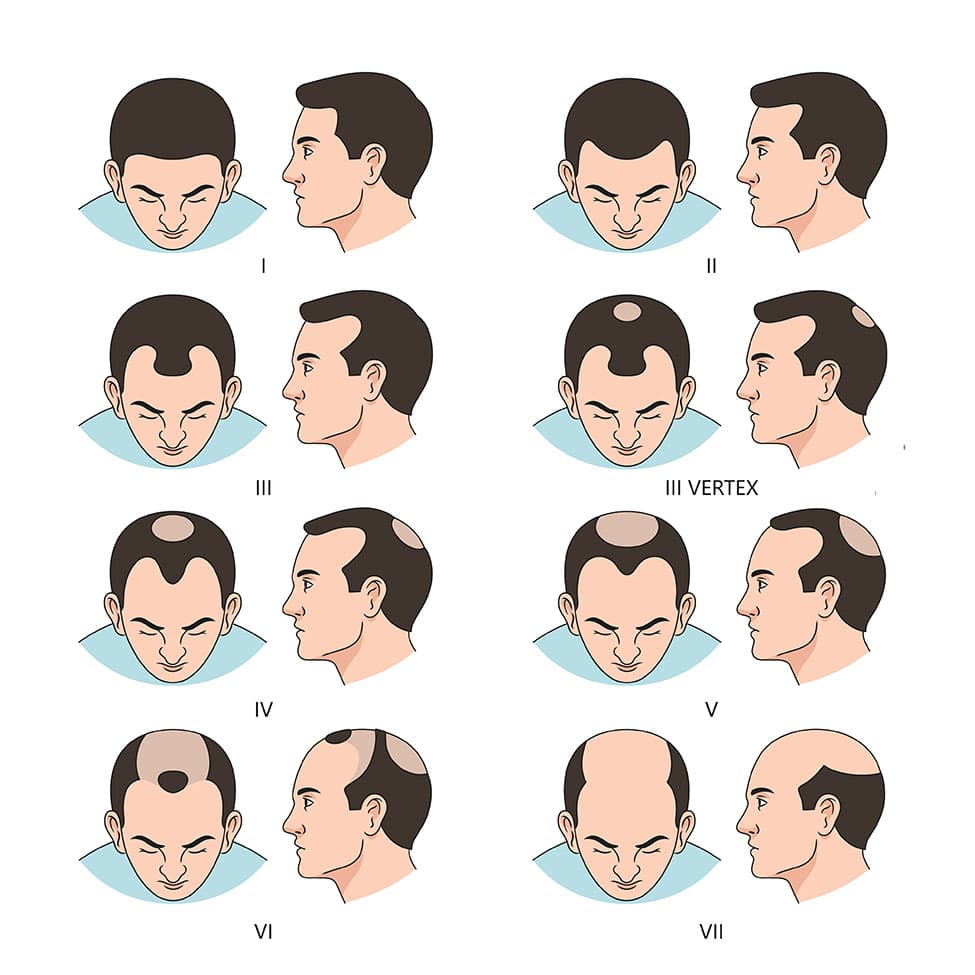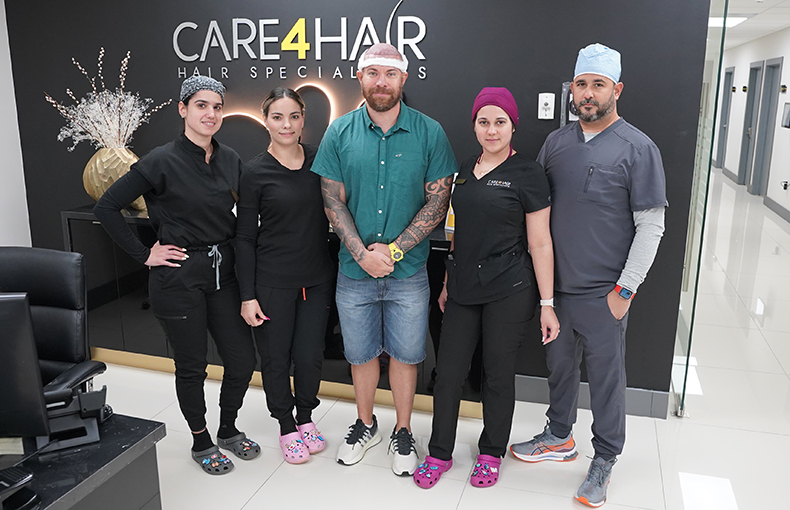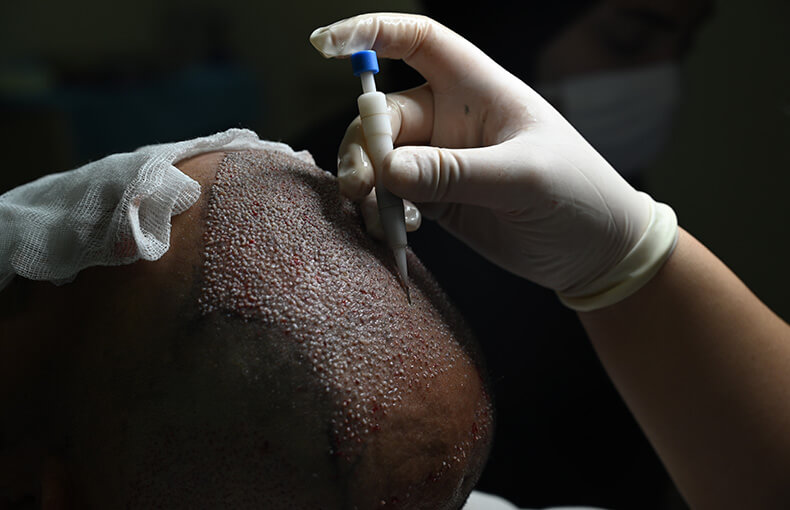
The Norwood Scale: what it is and how it’s used
The Norwood Scale: classification of baldness and how it can help you regain your hair.
Baldness is the most common problem that almost every man faces, regardless of his age, and to understand the development and probable solution to this, a widely recognized tool is used: the Norwood scale. This scale represents one of the basic references specialists use in hair transplantation. We at Care4Hair use it during free evaluation consultations to ascertain the degree of each patient's baldness and inform him about proper treatment. This article will explain how the Norwood scale works, showing it can be your first step to regain your confidence and hair.
What Is the Norwood Scale?
The Norwood scale is a system that categorizes hair loss in men into stages. It was developed by Dr. O'Tar Norwood in 1975, and since then, it has been one of the basic criteria in hair transplantation. This scale is designed to measure androgenetic alopecia, the most frequent form of baldness in men. It works by monitoring the advancement of hair loss and is divided into seven stages that range from slight recession in the frontal hairline to complete baldness of the crown.
Stages of the Norwood Scale
- Norwood 1: At this stage, the hair shows no apparent sign of loss. The hairline is almost the same as during puberty, though some men can observe a slight recession.
- Norwood 2: This marks the beginning of baldness. The frontal line of hair has now started to recede, mostly at the temples. This is usually referred to as "receding hairline."
- Norwood 3: The recession of the frontal hairline becomes more evident, with the possible onset of balding on the crown. It is at this stage that many men start considering hair transplantation treatments.
- Norwood 3 Vertex: Similar to phase 3, but with one important addition: balding starts and becomes noticeable at the crown, usually developing further in time.
- Norwood 4: In this stage, the balding on the crown is more noticeable, while the frontal hairline continues to recede. The remaining hair around the sides and back of the head is usually thicker and forms what is commonly referred to as a "horseshoe" pattern.
- Norwood 5: In this phase, the frontal hairline and crown balding areas are drawn closer together, and the area of hair loss becomes larger. The hair on the sides is thinner.
- Norwood 6: The balding is nearly complete except for a small band of hair around the sides and back of the head. A minuscule amount of hair remains.
- Norwood 7: This is the final stage of the Norwood Scale, where the hair on the sides and back is extremely thin or nonexistent. Baldness is nearly total.

How Is the Norwood Scale Used in a Consultation?
The Norwood scale is very important at Care4Hair's hair transplant consultation, which is always free for our patients. During this consultation, the hair transplant specialist assesses the patient's current state of baldness using the scale to determine the stage of androgenetic alopecia. Based on that information, our team can provide a personalized recommendation that includes either preventive treatments or the possibility of a hair transplant in Miami using the FUE, or follicular unit extraction method.
This process allows each patient to receive the appropriate treatment for his degree of hair loss. Additionally, realistic expectations are discussed regarding the results, and examples of patients who have undergone the same process are shown, helping them make an informed decision about their hair health.
Why is it important to know your classification on the Norwood Scale?
This is important because knowing your position on the Norwood scale will allow you to understand the stages your baldness has been progressing through and what treatment options are available. Most patients who come for consultation have a lot of doubt and anxiety due to hair loss. By understanding the stage of the scale on which they are, they can make clearer decisions.
A proper diagnosis also means treatments, such as hair transplantation with the FUE technique, are more effective because they will be applied exactly where needed. Another important factor to keep in mind is that even when two patients fall into the same stage on the scale, this does not imply that they will undergo the same treatment; other factors intervene, like hair thickness, texture, and color, number of hairs in each follicle, and patient's facial dimensions. That's why the evaluation consultation is so necessary, for the patient and specialist, to meet and analyze all these elements.
Inspiring Testimonials
Hair transplant surgery has been life-changing for many of our patients who come to Care4Hair. However, two latest cases reveal the miracles of this surgery; they are Yasiel Fragoso and Jorge Pérez. Both Yasiel, who had surgery at age 33, and his lifelong barber, Jorge, had very remarkable hair transplant changes. In fact, Jorge was so impressed with Yasiel's before-and-after results that he decided to undergo the surgery himself. You can read their full stories and see before and after photos, in our patient stories section, where we showcasing testimonies of people regaining their confidence thanks to Care4Hair.
Conclusion: The first step toward a new version of yourself.
Knowing your place on the Norwood scale is just the beginning of your hair restoration journey. If you happen to be at any stage on this scale and you're in doubt about the most suitable treatment for you, Care4Hair invites you to contact us for an evaluation consultation absolutely free. During that consultation, our specialists will guide you step by step and offer the best options to restore your hair.




















